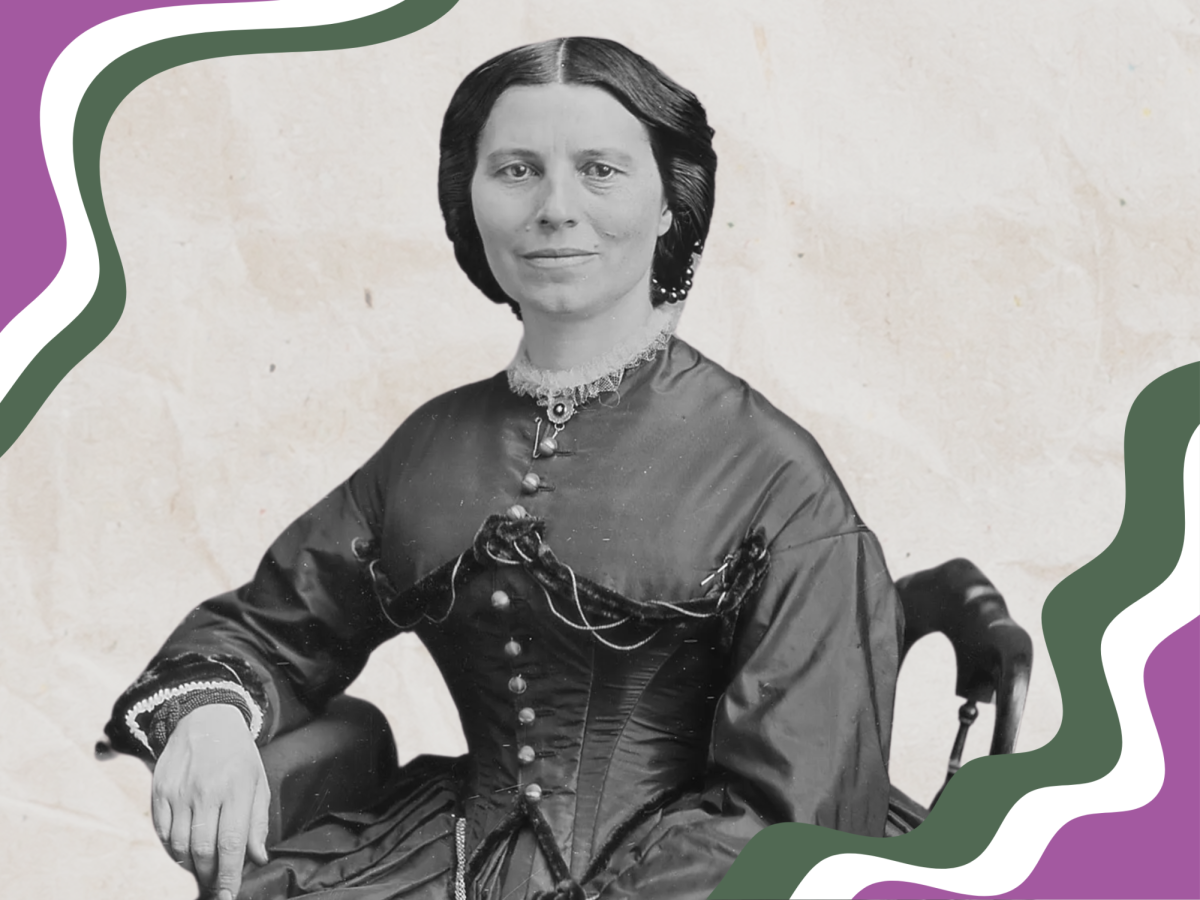Netflix’s hit comedy “Sex Education” is more than just entertainment for teens
The series “Sex Education” provides more than just comedy; the show gives young people authentic ways of viewing themselves on screen.
November 24, 2021
One student’s name has been changed for anonymity.
Season three of Netflix’s British teen comedy “Sex Education” premiered on Sept. 17. The series follows awkward high school student Otis Milburn, portrayed by Asa Butterfield, as he navigates his relationship with sex and love in secondary school. Otis grudgingly takes on the role of his peers’ “sex therapist,” with the help of the school’s rebellious “cool-girl” Maeve Wiley, played by Emma Mackey, giving intimate advice to his classmates on topics like sexual shame and respecting one’s partner.
The show is highly graphic, with a great deal of mature sexual content and casual nudity. Even the show’s opening consists of a sex scene. This crudeness has turned some viewers off from the series, which is intended for young audiences.
Despite the overt sexual content, the show holds a unique place among teenagers. “Sex Education” looks to its namesake with open arms, emphasizing the significance of respectful conversations about sexual health. The series also provides uniquely authentic representation to underrepresented groups, especially people of color and the LGBTQ+ community. This diversity is far from simple tokenization; each individual’s identities complement their stories rather than overwhelming them. These features make “Sex Education” not merely an enjoyable show but a meaningful one for young people.
Otis’s best friend, Eric Effiong, portrayed by Ncuti Gatwa, is Black and gay. Throughout the show’s three seasons, Eric navigates several relationships, cultural identity struggles and a quest for familial understanding. Gatwa’s character is, wonderfully, a stranger to overused gay stereotypes; instead of hardships, his character development focuses on individuality and self-expression. This is exemplified in Eric’s growth throughout the series. After struggling to find his place at school and among his LGBTQ+ peers, he gains confidence in his own vibrant clothing and makeup and he reclaims his Nigerian identity after feeling he’s lost connection with his ethnicity.
Fellow supporting character Ola, portrayed by Patricia Allison, debuts in the show’s second season as a love interest for Otis. As the season progresses, however, Ola realizes that she is pansexual and starts dating a female student in the show. Ola’s journey matters because her growth highlights that many students, even those who may not initially identify as LGBTQ+, are still navigating their identities and learning about themselves.
“Ola didn’t really realize that she was queer until high school, and that was a similar experience for me,” Whitman junior Angela said. “I like how they portrayed her figuring it out and coming to terms with her sexuality and then eventually just being very proud of who she was. I definitely resonated with that.”
In many popular teen shows, such as “Outer Banks” and “Friends,” the lead female characters serve one of two purposes. They either solely paint an image of female empowerment by conquering effeminate stereotypes or the exact opposite: to those around them, they are merely the “girlfriend” or a sexual object. For example, in the popular sitcom “That 70’s Show,” central characters Donna and Jackie exist purely as the girlfriends of the main male characters.
“Sex Education,” on the other hand, opens the door to a new era of female sex positivity. Its principal female figures, particularly Maeve and her best friend Aimee, played by Aimee Lou Wood, proudly claim their sexuality while showcasing themselves as witty, entertaining and otherwise pragmatic beings.
“I love Maeve and Amy,” junior Maddie Cartillier said. “I think they are a great representation of being a teenage girl and what that entails. They show an amazing supportive female friendship throughout the show.”
Another character named Cal, played by Dua Saleh, first appears in the show’s third season as a non-binary student. The headmistress at the secondary school denies Cal their right to use a gender-neutral changing room and to wear a gender non-conforming uniform. Later, she hides Cal out of embarrassment when the press comes to school for promotion purposes.
Cal’s unique storyline speaks volumes about the significance of respecting transgender and non-binary people. Spotlighting a non-binary character in a popular series allows audiences to more readily accept and appreciate transgender and non-binary youth. Prejudiced characters like the headmistress serve as a reminder that schools like Whitman need to continue to make sure all students, regardless of gender or sexual identity, feel safe among their peers.
“I would 100% recommend the show to anyone, no matter who they are,” Angela said. “Even if someone doesn’t resonate with it or feel seen by it, it’s such a good way to learn about the experiences of others.”
By including legitimately diverse characters and storylines, “Sex Education” successfully caters to a wide array of young viewers all over the world. The show is a step in the right direction toward a new age of media that’s apt for Gen Z. The series may be graphic, but “Sex Education” empowers young adults to embrace tolerance and, above all, uplift their peers.










